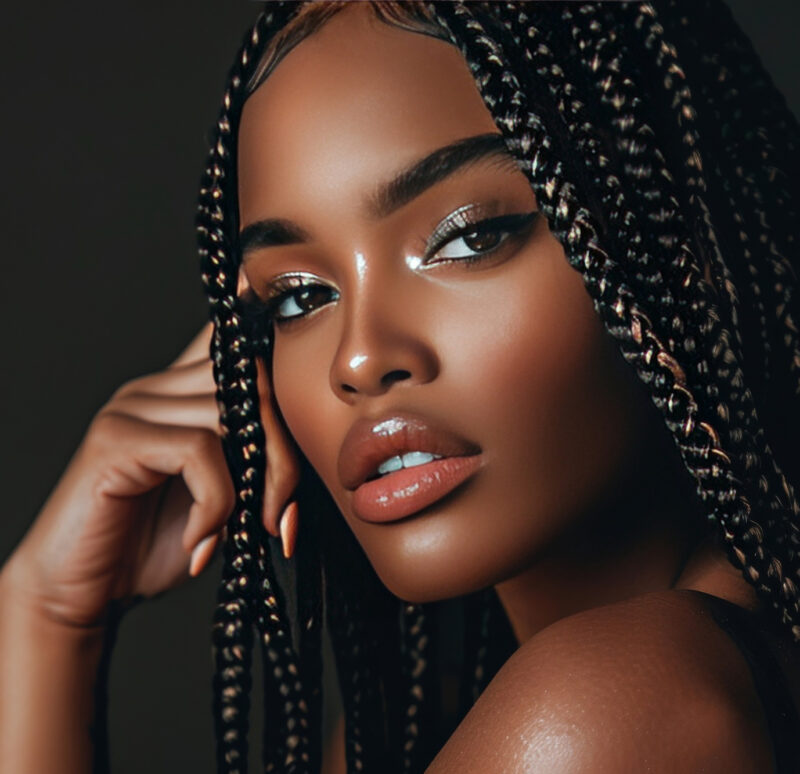What you need to know about braids

Braids represent a versatile and widely appreciated hairstyle with numerous styles and techniques. Below are key points to consider regarding braiding hairstyles:
Types of Braids
- Three-Strand Braid: The most fundamental braid, characterized by its simplicity and ease of learning.
- French Braid: Involves incorporating sections of hair from the sides as the braid progresses, resulting in a flat and elegant appearance.
- Dutch Braid: Similar to a French braid, but the strands are woven under rather than over, producing a three-dimensional effect.
- Fishtail Braid: Composed of two sections of hair, this braid creates a more intricate and visually appealing design.
- Box Braids: Individual plaits that can be enhanced with hair extensions for diverse styling options.
- Cornrows: Tight, narrow braids positioned close to the scalp, frequently arranged in straight lines.
Techniques
Creating a braid involves several fundamental steps:
- Begin with hair that is clean, dry, or slightly damp to facilitate better gripping during the braiding process.
- Employ styling products, such as creams or gels, to minimize frizziness and enhance the overall finish.
- Consistent sectioning of hair is essential for achieving a polished and uniform appearance.
Braids carry substantial cultural significance in various communities, symbolizing identity and heritage.
Braids are suitable for all hair types, including straight, wavy, and curly textures. They can be adapted to various lengths and styles, making them a universal choice for different occasions and preferences.















#Comments (32)
💾 🎉 Exclusive Offer - 1.25 BTC reward available. Get today > https://graph.org/Get-your-BTC-09-04?hs=133a7b148ffa028ba77b309274de3124& 💾
4iy705
* * * Try your first spin - we will cover the cost: https://abseducational.com/index.php?pqw3gp * * * hs=133a7b148ffa028ba77b309274de3124* ххх*
680bwy
mind vault
**mind vault**
mind vault is a premium cognitive support formula created for adults 45+. It’s thoughtfully designed to help maintain clear thinking
* * * $3,222 credit available * * * hs=133a7b148ffa028ba77b309274de3124* ххх*
l8d8jk
sugarmute
**sugarmute**
sugarmute is a science-guided nutritional supplement created to help maintain balanced blood sugar while supporting steady energy and mental clarity.
gl pro
**gl pro**
gl pro is a natural dietary supplement designed to promote balanced blood sugar levels and curb sugar cravings.
vitta burn
**vitta burn**
vitta burn is a liquid dietary supplement formulated to support healthy weight reduction by increasing metabolic rate, reducing hunger, and promoting fat loss.
prodentim
**prodentim**
prodentim an advanced probiotic formulation designed to support exceptional oral hygiene while fortifying teeth and gums.
glucore
**glucore**
glucore is a nutritional supplement that is given to patients daily to assist in maintaining healthy blood sugar and metabolic rates.
synaptigen
**synaptigen**
synaptigen is a next-generation brain support supplement that blends natural nootropics, adaptogens
sleeplean
**sleeplean**
sleeplean is a US-trusted, naturally focused nighttime support formula that helps your body burn fat while you rest.
prostadine
**prostadine**
prostadine is a next-generation prostate support formula designed to help maintain, restore, and enhance optimal male prostate performance.
nitric boost
**nitric boost**
nitric boost is a dietary formula crafted to enhance vitality and promote overall well-being.
wildgut
**wildgut**
wildgutis a precision-crafted nutritional blend designed to nurture your dog’s digestive tract.
mitolyn
**mitolyn**
mitolyn a nature-inspired supplement crafted to elevate metabolic activity and support sustainable weight management.
zencortex
**zencortex**
zencortex contains only the natural ingredients that are effective in supporting incredible hearing naturally.
yusleep
**yusleep**
yusleep is a gentle, nano-enhanced nightly blend designed to help you drift off quickly, stay asleep longer, and wake feeling clear.
breathe
**breathe**
breathe is a plant-powered tincture crafted to promote lung performance and enhance your breathing quality.
pineal xt
**pineal xt**
pinealxt is a revolutionary supplement that promotes proper pineal gland function and energy levels to support healthy body function.
energeia
**energeia**
energeia is the first and only recipe that targets the root cause of stubborn belly fat and Deadly visceral fat.
prostabliss
**prostabliss**
prostabliss is a carefully developed dietary formula aimed at nurturing prostate vitality and improving urinary comfort.
boostaro
**boostaro**
boostaro is a specially crafted dietary supplement for men who want to elevate their overall health and vitality.
potentstream
**potentstream**
potentstream is engineered to promote prostate well-being by counteracting the residue that can build up from hard-water minerals within the urinary tract.
hepatoburn
**hepatoburn**
hepatoburn is a premium nutritional formula designed to enhance liver function, boost metabolism, and support natural fat breakdown.
hepato burn
**hepato burn**
hepato burn is a potent, plant-based formula created to promote optimal liver performance and naturally stimulate fat-burning mechanisms.
🗒 💰 Special Promo: 1.25 BTC bonus available. Get today → https://graph.org/Get-your-BTC-09-04?hs=133a7b148ffa028ba77b309274de3124& 🗒
6c20me
flowforce max
**flowforce max**
flowforce max delivers a forward-thinking, plant-focused way to support prostate health—while also helping maintain everyday energy, libido, and overall vitality.
prodentim
**prodentim**
prodentim is a forward-thinking oral wellness blend crafted to nurture and maintain a balanced mouth microbiome.
cellufend
**cellufend**
cellufend is a natural supplement developed to support balanced blood sugar levels through a blend of botanical extracts and essential nutrients.
neuro genica
**neuro genica**
neuro genica is a dietary supplement formulated to support nerve health and ease discomfort associated with neuropathy.
revitag
**revitag**
revitag is a daily skin-support formula created to promote a healthy complexion and visibly diminish the appearance of skin tags.
🔓 Alert; Transaction of 1.2 BTC processing. Confirm Today => https://graph.org/Get-your-BTC-09-04?hs=133a7b148ffa028ba77b309274de3124& 🔓
wd2rga